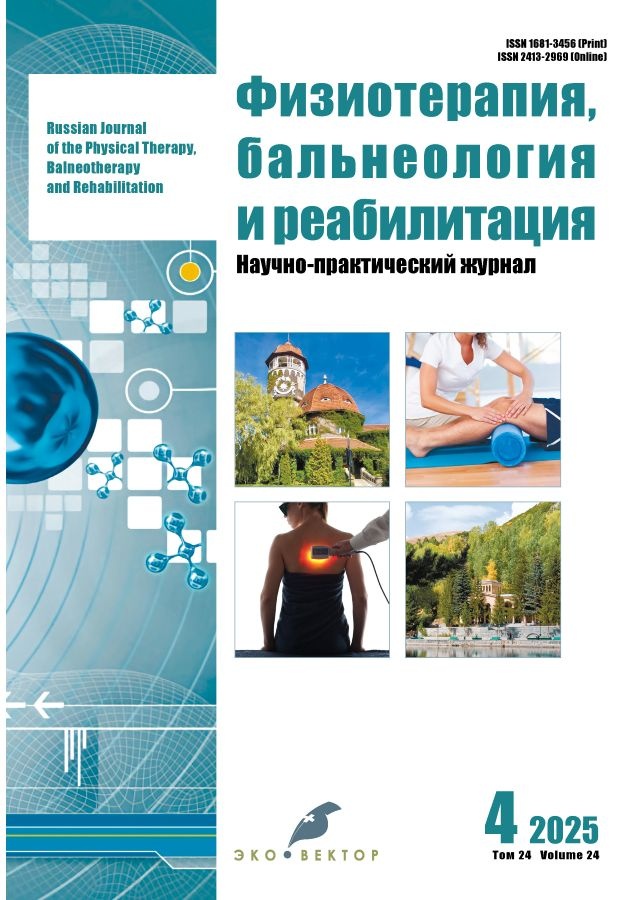Gait Features in Children With Hemiparetic Cerebral Palsy Based on Pedobarography Findings
- Authors: Kovalchuk T.S.1, Laisheva O.A.1,2, Vedernikov I.O.1, Andreev A.D.1, Noskov A.V.2
-
Affiliations:
- Russian Children’s Clinical Hospital — Branch of the Pirogov Russian National Research Medical University
- The Russian National Research Medical University named after N.I. Pirogov
- Issue: Vol 24, No 4 (2025)
- Pages: 280-294
- Section: Original studies
- Published: 16.08.2025
- URL: https://rjpbr.com/1681-3456/article/view/678231
- DOI: https://doi.org/10.17816/rjpbr678231
- EDN: https://elibrary.ru/EDCNHN
- ID: 678231
Cite item
Abstract
BACKGROUND: Hemiparetic cerebral palsy (CP) is characterized by pronounced movement asymmetry and impaired weight-bearing function of the affected lower limb. Despite the availability of gait assessment methods, accurate quantitative parameters that capture the unique characteristics of hemiparetic gait in children have not been thoroughly investigated. Pedobarography is a modern instrumental method for analyzing pressure distribution on the plantar surface of the foot, assessing temporal and spatial gait parameters, and detecting load asymmetry, as well as primary and secondary gait impairments.
AIM: The work aimed to assess the clinical value of pedobarography in children with hemiparetic CP.
MATERIALS AND METHODS: This was a single-center, observational, retrospective, continuous study. Between November 2021 and December 2024, 86 pedobarographic profiles of children with confirmed hemiparetic cerebral palsy aged 6 to 16 years were analyzed during initial examinations at the Department of Pediatric Rehabilitation of the Russian Children's Clinical Hospital, a branch of Pirogov Russian National Research Medical University.
RESULTS: The most significant pedobarographic markers in children with hemiparetic CP were identified.
CONCLUSIONS: The pedobarography findings can be used to develop individualized rehabilitation programs for improving motor function and optimizing static and dynamic parameters in this pediatric population, as well as to prevent secondary musculoskeletal complications (such as joint stiffness, deformities of the paretic lower limb, pelvic misalignment, and scoliosis) in children with hemiparetic cerebral palsy.
Keywords
Full Text
About the authors
Timofey S. Kovalchuk
Russian Children’s Clinical Hospital — Branch of the Pirogov Russian National Research Medical University
Author for correspondence.
Email: tim-kovalchuk@yandex.ru
ORCID iD: 0000-0002-9870-4596
SPIN-code: 2067-7912
Russian Federation, Moscow
Olga A. Laisheva
Russian Children’s Clinical Hospital — Branch of the Pirogov Russian National Research Medical University; The Russian National Research Medical University named after N.I. Pirogov
Email: olgalaisheva@mail.ru
ORCID iD: 0000-0002-8084-1277
SPIN-code: 8188-2819
MD, Dr. Sci. (Medicine), Professor
Russian Federation, Moscow; MoscowIgor O. Vedernikov
Russian Children’s Clinical Hospital — Branch of the Pirogov Russian National Research Medical University
Email: pulmar@bk.ru
ORCID iD: 0009-0006-1327-2525
SPIN-code: 5047-2594
Russian Federation, Moscow
Alexander D. Andreev
Russian Children’s Clinical Hospital — Branch of the Pirogov Russian National Research Medical University
Email: alex10_97@mail.ru
ORCID iD: 0000-0002-2655-1615
Russian Federation, Moscow
Alexander V. Noskov
The Russian National Research Medical University named after N.I. Pirogov
Email: parter1997@mail.ru
ORCID iD: 0009-0004-4878-1026
Russian Federation, Moscow
References
- Guzik A, Drużbicki M, Kwolek A, et al. The paediatric version of Wisconsin gait scale, adaptation for children with hemiplegic cerebral palsy: a prospective observational study. BMC Pediatrics. 2018;18(1):301. doi: 10.1186/s12887-018-1262-4
- Prevalence of specific gait abnormalities in children with cerebral palsy. Dev Med Child Neurol. 2016;58(8):798–805. doi: 10.1111/dmcn.13111
- Changes in foot posture evaluated with dynamic pedobarography in children with cerebral palsy. J Pediatr Orthop. 2024;44(1):19–27. doi: 10.1097/BPO.0000000000002001
- Which gait training intervention can most effectively improve gait ability in children with cerebral palsy? Front Neurol. 2023;14:9871496. doi: 10.3389/fneur.2023.9871496
- Spatiotemporal characteristics of gait when walking on an uneven surface: A comparative study of healthy children and children with cerebral palsy. Gait Posture. 2025;98:45–53. doi: 10.1016/j.gaitposture.2025.03.001
- Pedobarographic evaluations in physical medicine and rehabilitation for children with hemiparetic cerebral palsy. Phys Med Rehabil Clin N Am. 2023;34(2):289–302. doi: 10.1016/j.pmrj.2023.01.007
- Advances in pedobarographic techniques for assessing asymmetry in gait patterns among pediatric patients with cerebral palsy (2020–2024). Clin Gait Analysis. 2025;12(4):45–60.
- Dynamic pedobarography as a tool for optimizing therapeutic interventions in pediatric CP patients undergoing gait training programs (2023). Pediatr Rehabil Med. 2023;29(2):99–108.
- Comparative outcomes of pedobarographic versus traditional gait analysis methods among pediatric patients with CP undergoing surgical correction procedures (2019–2025). Pediatr Orthop Surg. 2025;40(1):15–25.
- Longitudinal changes in foot dynamics and pressure distribution among pediatric patients with CP treated using advanced pedobarographic systems (2018–2025). J Orthop Res. 2025;43(1):12–20.
- Biomechanical analysis of asymmetry in gait parameters among hemiparetic CP patients using pedobarographic technologies (review). Biomech Clin Appl. 2022;33(4):55–66.
- Monitoring method of functional restoration of unstable ankle joint injuries using pedobarography (2022). Clin Biomech. 2022;91:105–112.
- Perry J, Burnfield JM. Gait analysis: Normal and pathological function. 2nd ed. Thorofare: SLACK Incorporated; 2010.
- Studenski S, Perera S, Patel K, et al. Gait speed and survival in older adults. JAMA. 2011;305(1):50–8.
- Rosenbaum D, Becker HP. Plantar pressure distribution measurements: Technical background and clinical applications. Foot Ankle Surg. 1997;3(1):1–14.
- Simon SR, Mann RA, Hagy JL, et al. Quantitative analysis of human gait using a force plate and computer system: A study of normal and pathological gait patterns in children with cerebral palsy and adults with hemiplegia following stroke rehabilitation therapy interventions over time (1973). J Biomech Eng Trans ASME. 1973;95(4):287–94.
- Whittle MW. Gait analysis: An introduction. 4th ed. Oxford: Butterworth-Heinemann; 2007.
Supplementary files











